Spaniel on:
[Wikipedia]
[Google]
[Amazon]

 A spaniel is a type of gun dog. Spaniels were especially bred to flush game out of denser brush. By the late 17th century, spaniels had been specialized into water and land breeds. The extinct
A spaniel is a type of gun dog. Spaniels were especially bred to flush game out of denser brush. By the late 17th century, spaniels had been specialized into water and land breeds. The extinct
 The ''
The ''
 The origin of the word ''spaniel'' is described by the ''Oxford English Dictionary'' as coming from the
The origin of the word ''spaniel'' is described by the ''Oxford English Dictionary'' as coming from the
 In assisting hunters, it is desirable that spaniels work within gun range, are steady to shot, and are able to mark the fall and retrieve shot game to hand with a soft mouth. A good nose is highly valued, as it is in most gun dog breeds. They are versatile hunters traditionally being used for upland game birds, but are equally adept at hunting rabbits, waterfowl, rats, and mice. Whether hunting in open fields, woodlands, farm lands—in briars, along
In assisting hunters, it is desirable that spaniels work within gun range, are steady to shot, and are able to mark the fall and retrieve shot game to hand with a soft mouth. A good nose is highly valued, as it is in most gun dog breeds. They are versatile hunters traditionally being used for upland game birds, but are equally adept at hunting rabbits, waterfowl, rats, and mice. Whether hunting in open fields, woodlands, farm lands—in briars, along
 , -
, Drentse Patrijshond
, Dutch Partridge Dog
, Netherlands
,
,
,
,
, align=center,
, -
, Drentse Patrijshond
, Dutch Partridge Dog
, Netherlands
,
,
,
,
, align=center,  , -
, English Cocker Spaniel
, Cocker Spaniel
, -
, English Cocker Spaniel
, Cocker Spaniel
(In the United Kingdom) , England , , , , , align=center, , -
, English Springer Spaniel
,
, England
,
,
,
,
, align=center,
, -
, English Springer Spaniel
,
, England
,
,
,
,
, align=center, 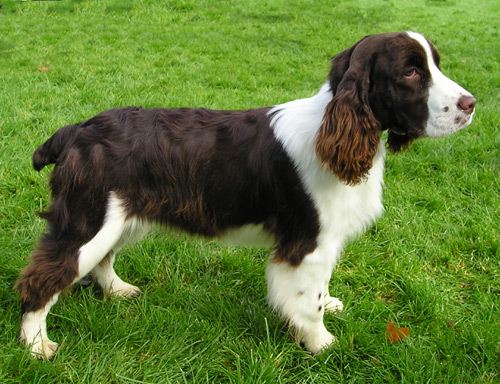 , -
,
, -
, 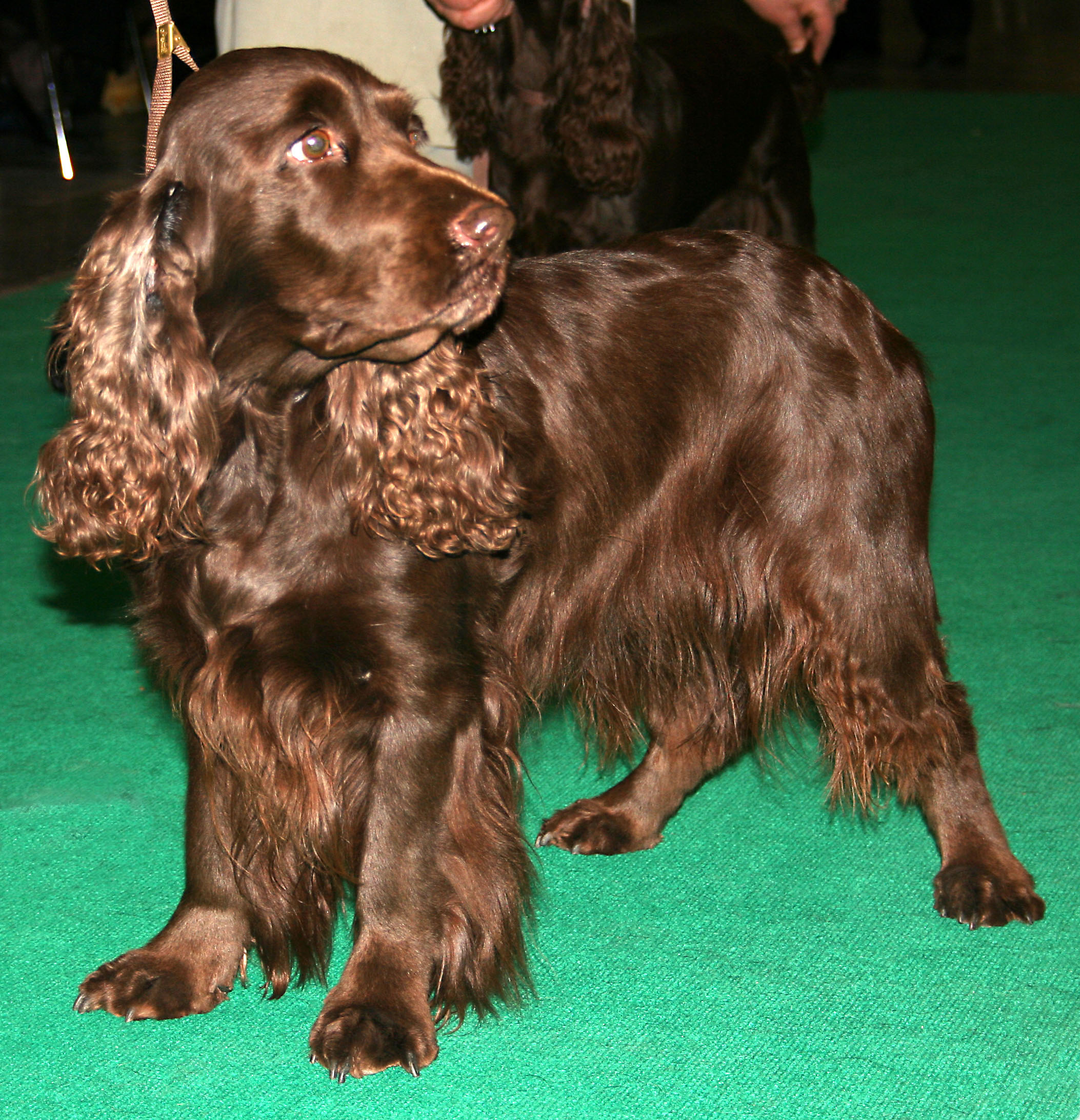 , -
, French Spaniel
, Épagneul français
, -
, French Spaniel
, Épagneul français
(in France) , France , , , , , align=center, , - , German Spaniel , Deutscher Wachtelhund , Germany , , , , , align=center, , -
,
, -
,  , -
,
, -
,
(in the United States) , England , , , , , align=center, , -
, Kooikerhondje
, Dutch Spaniel
, Netherlands
,
,
,
,
, align=center,
, -
, Kooikerhondje
, Dutch Spaniel
, Netherlands
,
,
,
,
, align=center,  , -
, Markiesje
, Dutch Tulip Hound
, Netherlands
,
,
,
,
, align=center,
, -
, Markiesje
, Dutch Tulip Hound
, Netherlands
,
,
,
,
, align=center,  , -
, Papillon
, Continental Toy Spaniel,
, -
, Papillon
, Continental Toy Spaniel,
Épagneul Nain Continental , France , , , , , align=center, , -
, Phalène
, Continental Toy Spaniel,
, -
, Phalène
, Continental Toy Spaniel,
Épagneul Nain Continental , Belgium , , , , , align=center,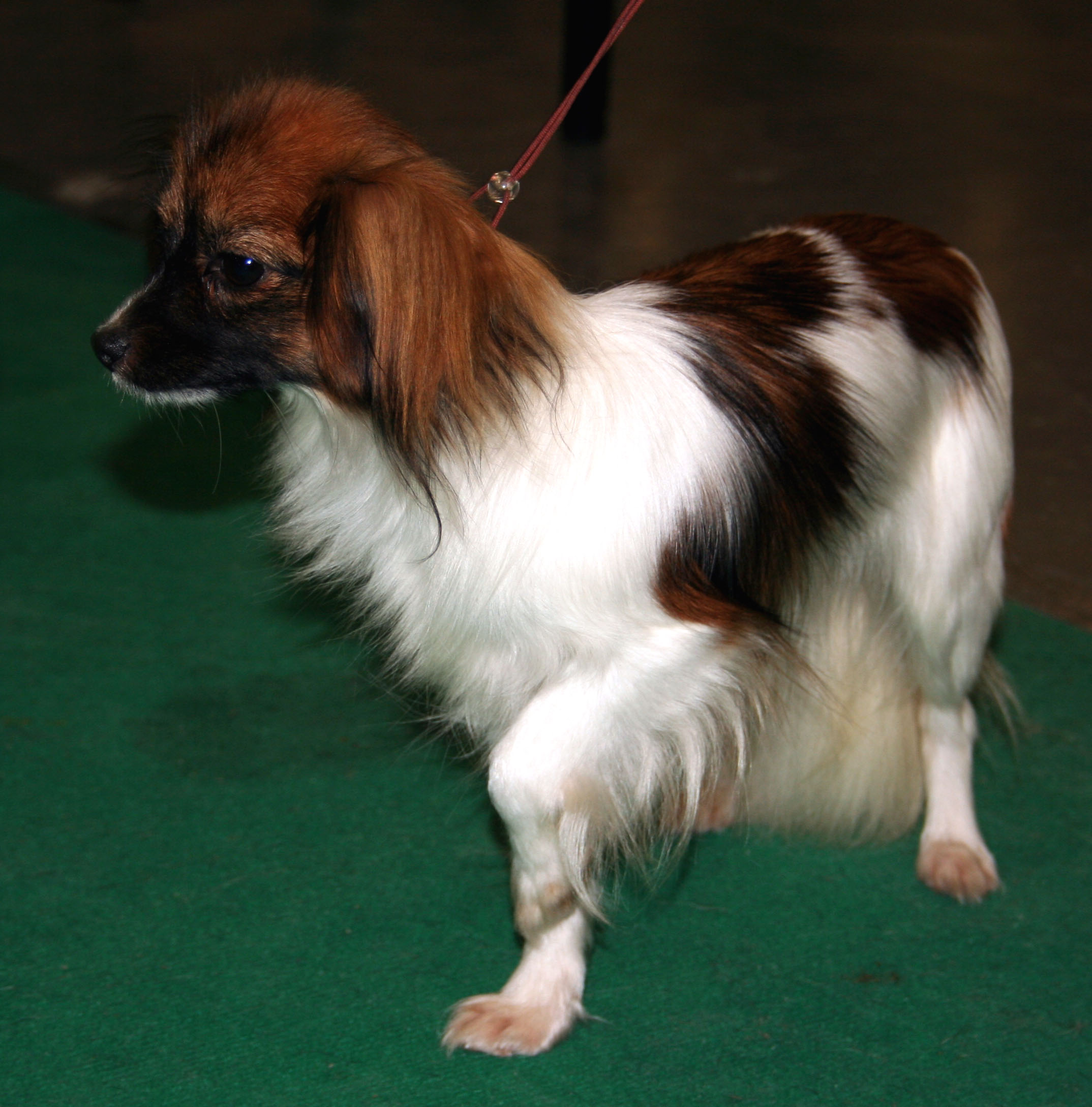 , -
,
, -
, 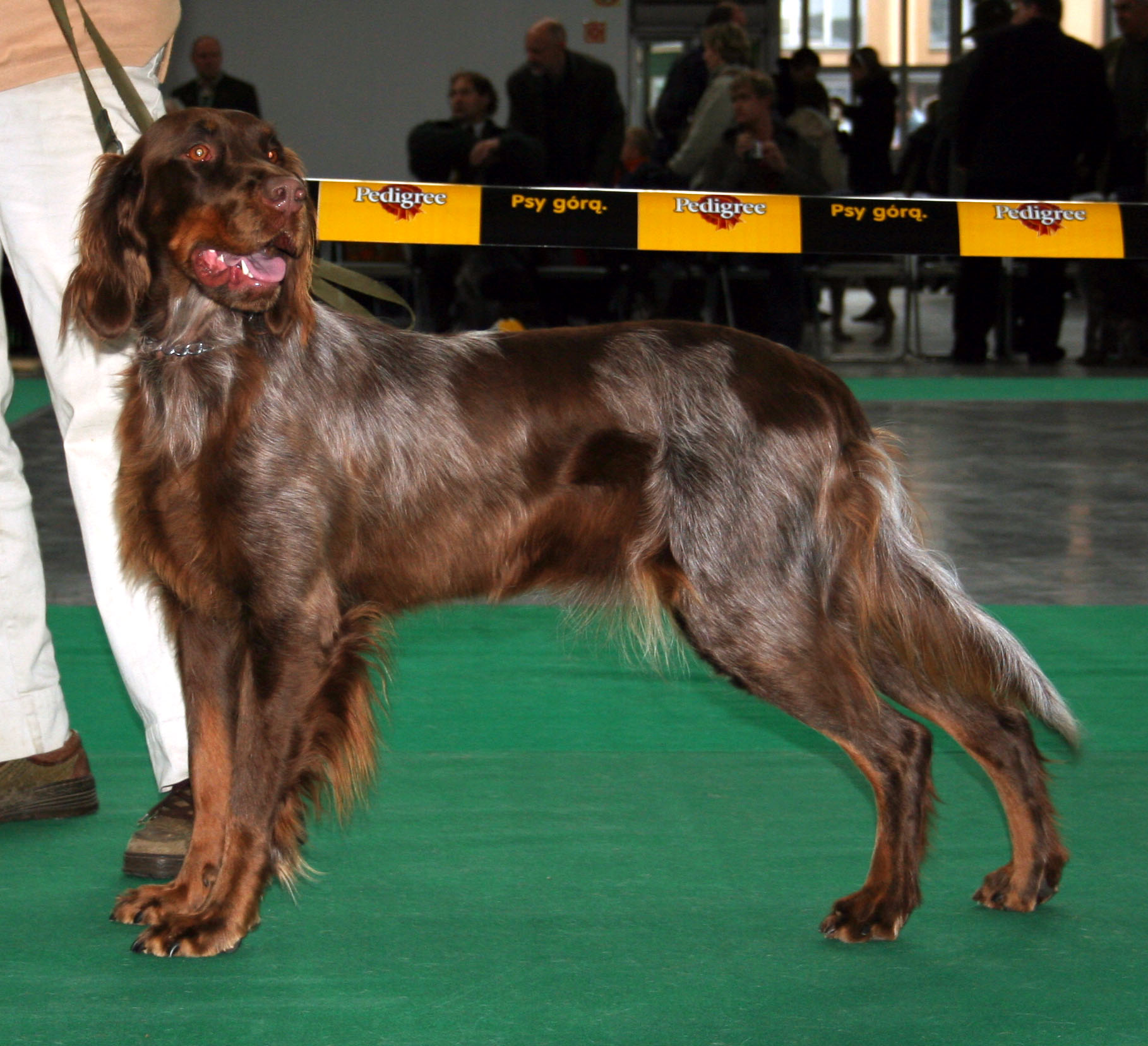 , -
, Pont-Audemer Spaniel
, Épagneul Pont-Audemer
, France
,
,
,
,
, align=center,
, -
, Pont-Audemer Spaniel
, Épagneul Pont-Audemer
, France
,
,
,
,
, align=center,  , -
, Russian Spaniel
, Russian hunting spaniel
(Русский охотничий спаниель)
, Russia
,
,
,
,
, align=center,
, -
, Russian Spaniel
, Russian hunting spaniel
(Русский охотничий спаниель)
, Russia
,
,
,
,
, align=center, 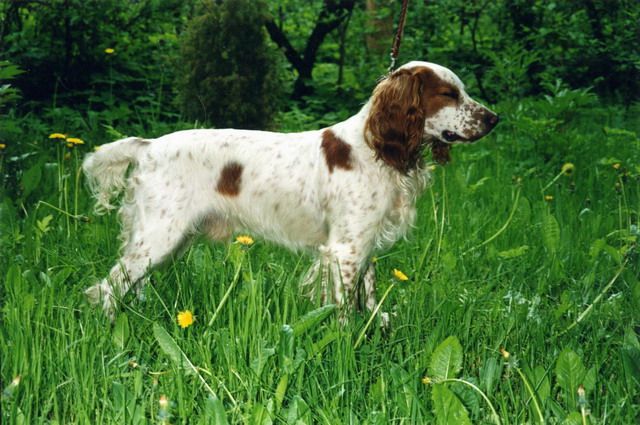 , -
, Stabyhoun
, Frisian Pointer
, Netherlands
,
,
,
,
, align=center,
, -
, Stabyhoun
, Frisian Pointer
, Netherlands
,
,
,
,
, align=center,  , -
, -
, Sussex Spaniel
,
, England
,
,
,
,
, align=center,
, -
, -
, Sussex Spaniel
,
, England
,
,
,
,
, align=center,  , -
,
, -
,  , -
, -
Journal "Spaniel" (rus) / journalspaniel.ru
Journal "Spaniel" (eng) / spanieljournal.com
{{Gundogs * Dog types Hunting dogs

 A spaniel is a type of gun dog. Spaniels were especially bred to flush game out of denser brush. By the late 17th century, spaniels had been specialized into water and land breeds. The extinct
A spaniel is a type of gun dog. Spaniels were especially bred to flush game out of denser brush. By the late 17th century, spaniels had been specialized into water and land breeds. The extinct English Water Spaniel
The English Water Spaniel is a breed of dog that has been extinct since the first part of the 20th century, with the last specimen seen in the 1930s. It was best known for its use in hunting waterfowl and for being able to dive as well as a duck. ...
was used to retrieve water fowl shot down with arrows. Land spaniels were setting spaniels—those that crept forward and pointed their game, allowing hunters to ensnare them with nets, and springing spaniels—those that sprang pheasants and partridges for hunting with falcons, rabbits and smaller mammals such as rats and mice for hunting with greyhound
The English Greyhound, or simply the Greyhound, is a breed of dog, a sighthound which has been bred for coursing, greyhound racing and hunting. Since the rise in large-scale adoption of retired racing Greyhounds, the breed has seen a resurgenc ...
s. During the 17th century, the role of the spaniel dramatically changed as Englishmen began hunting with flintlock
Flintlock is a general term for any firearm that uses a flint-striking ignition mechanism, the first of which appeared in Western Europe in the early 16th century. The term may also apply to a particular form of the mechanism itself, also know ...
s for wing shooting. Charles Goodall and Julia Gasow (1984) write that spaniels were "transformed from untrained, wild beaters, to smooth, polished gun dogs."
The word "spaniel" would seem to be derived from the medieval French ''espaigneul''"Spanish"to modern French, ''espagnol''.
Definition and description
Oxford English Dictionary
The ''Oxford English Dictionary'' (''OED'') is the first and foundational historical dictionary of the English language, published by Oxford University Press (OUP). It traces the historical development of the English language, providing a c ...
'' defines Spaniel as "a breed of dog with a long silky coat and drooping ears".
Not much has changed about spaniels in general over the years, as can be seen in this 1921 entry in ''Collier's New Encyclopedia'':
Their distinguishing characteristics are a rather broad muzzle, remarkably long and full ears, hair plentiful and beautifully waved, particularly that of the ears, tail, and hinder parts of the thighs and legs. The prevailing color is liver and white, sometimes red and white or black and white, and sometimes deep brown, or black on the face and breast, with a tan spot over each eye. The English spaniel is a superior and very pure breed. The King Charles is a small variety of the spaniel used as a lapdog. The water spaniels, large and small, differ from the common spaniel only in the roughness of their coats, and in uniting the aquatic propensities of the Newfoundland dog with the fine hunting qualities of their own race. Spaniels possess a great share of intelligence, affection, and obedience, which qualities, combined with much beauty, make them highly prized as companions.
History
Old French
Old French (, , ; Modern French: ) was the language spoken in most of the northern half of France from approximately the 8th to the 14th centuries. Rather than a unified language, Old French was a linkage of Romance dialects, mutually intel ...
word ''espaigneul'' which meant "Spanish (dog)"; this in turn originated from the Latin
Latin (, or , ) is a classical language belonging to the Italic languages, Italic branch of the Indo-European languages. Latin was originally a dialect spoken in the lower Tiber area (then known as Latium) around present-day Rome, but through ...
''Hispaniolus'' which simply means "Spanish".
In Edward, 2nd Duke of York
Edward, 2nd Duke of York, ( – 25 October 1415) was an English nobleman, military commander and magnate. He was the eldest son of Edmund of Langley, 1st Duke of York, and a grandson of King Edward III of England. He held significant appointment ...
's work '' The Master of Game'', which was mostly a 15th-century translation of an earlier work by Gaston III of Foix-Béarn entitled ''Livre de chasse'', spaniels are described as being from Spain as much as all Greyhound
The English Greyhound, or simply the Greyhound, is a breed of dog, a sighthound which has been bred for coursing, greyhound racing and hunting. Since the rise in large-scale adoption of retired racing Greyhounds, the breed has seen a resurgenc ...
s are from England or Scotland. Sixteenth-century English physician John Caius
John Caius (born John Kays ; 6 October 1510 – 29 July 1573), also known as Johannes Caius and Ioannes Caius, was an English physician, and second founder of the present Gonville and Caius College, Cambridge.
Biography
Early years
Caius was ...
wrote that the spaniels of the time were mostly white, marked with spots that are commonly red. He described a new variety to have come out of France, which were speckled all over with white and black, "which mingled colours incline to a marble blewe".
Celtic origin theory
In the appendices added to the 1909 re-print of Caius' work, the editors suggested that the type of dogs may have been brought into theBritish Isles
The British Isles are a group of islands in the North Atlantic Ocean off the north-western coast of continental Europe, consisting of the islands of Great Britain, Ireland, the Isle of Man, the Inner and Outer Hebrides, the Northern Isl ...
as early as 900 BC by a branch of the Celts
The Celts (, see pronunciation for different usages) or Celtic peoples () are. "CELTS location: Greater Europe time period: Second millennium B.C.E. to present ancestry: Celtic a collection of Indo-European peoples. "The Celts, an ancient ...
moving from Spain into Cornwall
Cornwall (; kw, Kernow ) is a Historic counties of England, historic county and Ceremonial counties of England, ceremonial county in South West England. It is recognised as one of the Celtic nations, and is the homeland of the Cornish people ...
and on into Wales, England and Ireland. Theories on the origin of the Welsh Springer Spaniel
The Welsh Springer Spaniel (''Welsh'': ''Llamgi Cymru'') is a breed of dog and a member of the spaniel family. Thought to be comparable to the old Land Spaniel, they are similar to the English Springer Spaniel and historically have been re ...
support this theory, as it is believed that the breed specifically is a direct descendant of the " Agassian hunting dog" described in the hunting poem ''Cynegetica'' attributed to Oppian of Apamea Pseudo-Oppian ( grc, Ὀππιανός, ''Oppianós''; la, Oppianus), sometimes referred to as Oppian of Apamea or Oppian of Syria, was a Greco-Syrian poet during the reign of the emperor Caracalla. His work, a Greek didactic epic poem on hunt ...
, which belonged to the Celtic tribes of Roman Britain
Roman Britain was the period in classical antiquity when large parts of the island of Great Britain were under occupation by the Roman Empire. The occupation lasted from AD 43 to AD 410. During that time, the territory conquered wa ...
:
There is a strong breed of hunting dog, small in size but no less worthy of great praise. These the wild tribes of Britons with their tattooed backs rear and call by the name of Agassian. Their size is like that of worthless and greedy domestic table dogs; squat, emaciated, shaggy, dull of eye, but endowed with feet armed with powerful claws and a mouth sharp with close-set venomous tearing teeth. It is by virtue of its nose, however, that the Agassian is most exalted, and for tracking it is the best there is; for it is very adept at discovering the tracks of things that walk upon the ground, and skilled too at marking the airborne scent.
Roman origin theory
Another theory of the origin of the spaniel is that theancient Romans
In modern historiography, ancient Rome refers to Roman civilisation from the founding of the city of Rome in the 8th century BC to the collapse of the Western Roman Empire in the 5th century AD. It encompasses the Roman Kingdom (753–50 ...
imported spaniels into Britannia
Britannia () is the national personification of Britain as a helmeted female warrior holding a trident and shield. An image first used in classical antiquity, the Latin ''Britannia'' was the name variously applied to the British Isles, Grea ...
by way of the trade routes to the Far East
The ''Far East'' was a European term to refer to the geographical regions that includes East and Southeast Asia as well as the Russian Far East to a lesser extent. South Asia is sometimes also included for economic and cultural reasons.
The t ...
. Colonel David Hancock adds a belief that the sporting type of spaniel originated in China from the short-faced ancestors of dogs such as the Pekingese
The Pekingese (also spelled Pekinese) is a breed of toy dog, originating in China. The breed was favored by royalty of the Chinese Imperial court as a companion dog, and its name refers to the city of Peking (Beijing) where the Forbidden City i ...
, Pug and Shih Tzu
The Shih Tzu (, ; literally " Hsi Shih dog") is a toy dog breed originating from Tibet and was bred from the Pekingese and the Lhasa Apso.
Shih Tzus are known for their short snouts and large round eyes, as well as their long coat, floppy ea ...
. The theory goes that these ancestors were introduced into Southern Europe and evolved into the small sporting spaniels of the period around AD 1300–1600. The issue of how a short-muzzled dog could evolve into a longer-muzzled dog is addressed by pointing to the evolution of the King Charles Spaniel
The King Charles Spaniel (also known as the English Toy Spaniel) is a small dog breed of the spaniel type. In 1903, the Kennel Club combined four separate toy spaniel breeds under this single title. The other varieties merged into this breed w ...
into the Cavalier King Charles Spaniel
The Cavalier King Charles Spaniel is a British breed of toy dog of spaniel type. Four colours are recognised: Blenheim (chestnut and white), tricolour (black/white/tan), black and tan, and ruby; the coat is smooth and silky. The lifespan is u ...
in less than a century.
Hunting
 In assisting hunters, it is desirable that spaniels work within gun range, are steady to shot, and are able to mark the fall and retrieve shot game to hand with a soft mouth. A good nose is highly valued, as it is in most gun dog breeds. They are versatile hunters traditionally being used for upland game birds, but are equally adept at hunting rabbits, waterfowl, rats, and mice. Whether hunting in open fields, woodlands, farm lands—in briars, along
In assisting hunters, it is desirable that spaniels work within gun range, are steady to shot, and are able to mark the fall and retrieve shot game to hand with a soft mouth. A good nose is highly valued, as it is in most gun dog breeds. They are versatile hunters traditionally being used for upland game birds, but are equally adept at hunting rabbits, waterfowl, rats, and mice. Whether hunting in open fields, woodlands, farm lands—in briars, along fencerow
In agriculture, fences are used to keep animals in or out of an area. They can be made from a wide variety of materials, depending on terrain, location and animals to be confined. Most agricultural fencing averages about high, and in some places ...
s or marshlands, a spaniel can get the job done.
On the basis of function and hunting style, the Fédération Cynologique Internationale
The Fédération cynologique internationale (FCI) (English: International Canine Federation) is the largest international federation of national kennel clubs. It is based in Thuin, Belgium.
History
The FCI was founded in 1911 under the auspices ...
(FCI) draws a distinction between Continental and Anglo-American spaniels. The FCI places Continental dogs of the spaniel type in the pointing group (Group 7, sect. 1.2) because they function more like setters which "freeze" and point to game. Breeds in this group include the Blue Picardy Spaniel, the French Spaniel, the Brittany
Brittany (; french: link=no, Bretagne ; br, Breizh, or ; Gallo: ''Bertaèyn'' ) is a peninsula, historical country and cultural area in the west of modern France, covering the western part of what was known as Armorica during the period ...
, the Pont-Audemer Spaniel, and the Small Münsterländer. The FCI classifies most other dogs of the spaniel type as flushing or water dogs (Group 8, sections 2 and 3).
Breeds
Contemporary
, align=center, , -
, Drentse Patrijshond
, Dutch Partridge Dog
, Netherlands
,
,
,
,
, align=center,
, -
, Drentse Patrijshond
, Dutch Partridge Dog
, Netherlands
,
,
,
,
, align=center,  , -
, English Cocker Spaniel
, Cocker Spaniel
, -
, English Cocker Spaniel
, Cocker Spaniel(In the United Kingdom) , England , , , , , align=center,
 , -
, English Springer Spaniel
,
, England
,
,
,
,
, align=center,
, -
, English Springer Spaniel
,
, England
,
,
,
,
, align=center,  , -
,
, -
, Field Spaniel
The Field Spaniel is a medium-sized dog breed of spaniel type. They were originally developed to be all-black show dogs in the late 19th and early 20th centuries and were unpopular for work as a hunting dog. However, during the mid-20th centu ...
,
, England
,
,
,
,
, align=center,  , -
, French Spaniel
, Épagneul français
, -
, French Spaniel
, Épagneul français(in France) , France , , , , , align=center, , - , German Spaniel , Deutscher Wachtelhund , Germany , , , , , align=center,
 , -
,
, -
, Irish Water Spaniel
The Irish Water Spaniel ( Irish: ''An Spáinnéar Uisce'') is a breed of dog that is the tallest of the spaniels.
Description Appearance
The Irish Water Spaniel is a sturdy, cobby dog native to Ireland. The coat, consisting of dense cur ...
, Whiptail, Shannon Spaniel, Rat Tail Spaniel, and Bog Dog
, Ireland
,
,
,
,
, align="center" ,  , -
,
, -
, King Charles Spaniel
The King Charles Spaniel (also known as the English Toy Spaniel) is a small dog breed of the spaniel type. In 1903, the Kennel Club combined four separate toy spaniel breeds under this single title. The other varieties merged into this breed w ...
, English Toy Spaniel(in the United States) , England , , , , , align=center,
 , -
, Kooikerhondje
, Dutch Spaniel
, Netherlands
,
,
,
,
, align=center,
, -
, Kooikerhondje
, Dutch Spaniel
, Netherlands
,
,
,
,
, align=center,  , -
, Markiesje
, Dutch Tulip Hound
, Netherlands
,
,
,
,
, align=center,
, -
, Markiesje
, Dutch Tulip Hound
, Netherlands
,
,
,
,
, align=center,  , -
, Papillon
, Continental Toy Spaniel,
, -
, Papillon
, Continental Toy Spaniel,Épagneul Nain Continental , France , , , , , align=center,
 , -
, Phalène
, Continental Toy Spaniel,
, -
, Phalène
, Continental Toy Spaniel,Épagneul Nain Continental , Belgium , , , , , align=center,
 , -
,
, -
, Picardy Spaniel
The Picardy Spaniel is a breed of dog developed in France for use as a gundog. It is related to the Blue Picardy Spaniel, and still has many similarities, but the Picardy Spaniel is the older of the two breeds. It is thought to be one of the t ...
, Épagneul Picard
, France
,
,
,
,
, align=center,  , -
, Pont-Audemer Spaniel
, Épagneul Pont-Audemer
, France
,
,
,
,
, align=center,
, -
, Pont-Audemer Spaniel
, Épagneul Pont-Audemer
, France
,
,
,
,
, align=center,  , -
, Russian Spaniel
, Russian hunting spaniel
(Русский охотничий спаниель)
, Russia
,
,
,
,
, align=center,
, -
, Russian Spaniel
, Russian hunting spaniel
(Русский охотничий спаниель)
, Russia
,
,
,
,
, align=center,  , -
, Stabyhoun
, Frisian Pointer
, Netherlands
,
,
,
,
, align=center,
, -
, Stabyhoun
, Frisian Pointer
, Netherlands
,
,
,
,
, align=center,  , -
, -
, Sussex Spaniel
,
, England
,
,
,
,
, align=center,
, -
, -
, Sussex Spaniel
,
, England
,
,
,
,
, align=center,  , -
,
, -
, Welsh Springer Spaniel
The Welsh Springer Spaniel (''Welsh'': ''Llamgi Cymru'') is a breed of dog and a member of the spaniel family. Thought to be comparable to the old Land Spaniel, they are similar to the English Springer Spaniel and historically have been re ...
,
, Wales
,
,
,
, Smith (2002): p. 122
, align=center,  , -
, -
Extinct
Misnamed
The following breeds are not true spaniels, but are named as such due to their resemblance to the spaniels.See also
* Dogs portal *List of dog breeds
This list of dog breeds includes both extant and extinct dog breeds, varieties, landraces, and dog types. A research article on dog genomics published in Science/AAAS defines modern dog breeds as "a recent invention defined by conformation ...
* Alanorarius, a keeper of spaniels
* Hunting dog
A hunting dog is a canine that hunts with or for hunters. There are several different types of hunting dog developed for various tasks and purposes. The major categories of hunting dog include hounds, terriers, dachshunds, cur type dogs, and gu ...
* Dog type
Dog types are broad categories of domestic dogs based on form, function, or style of work, lineage, or appearance. Some may be locally adapted dog types (or '' landraces'') that may have the visual characteristics of a modern purebred dog. In ...
Citations
General references
* * *External links
Journal "Spaniel" (rus) / journalspaniel.ru
Journal "Spaniel" (eng) / spanieljournal.com
{{Gundogs * Dog types Hunting dogs